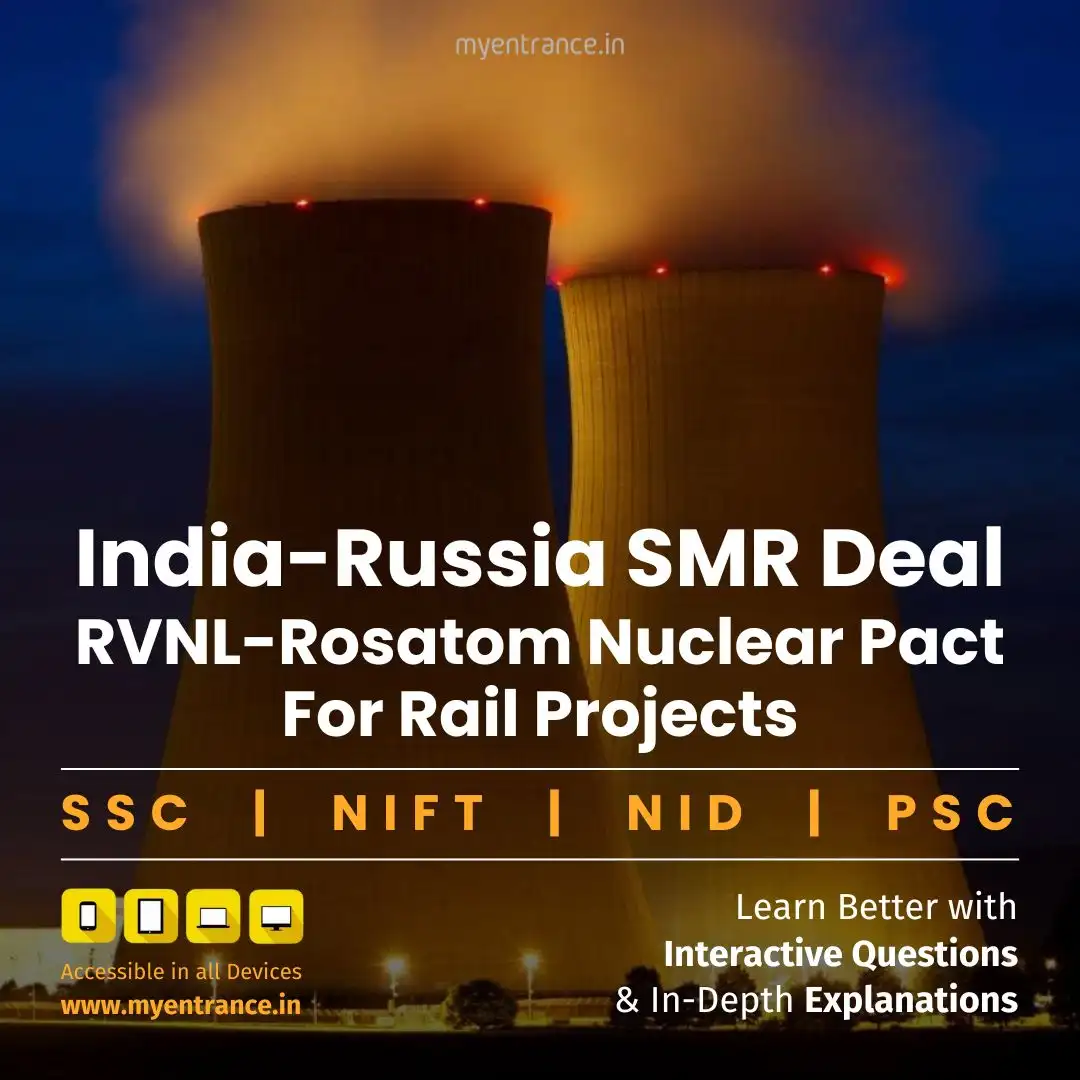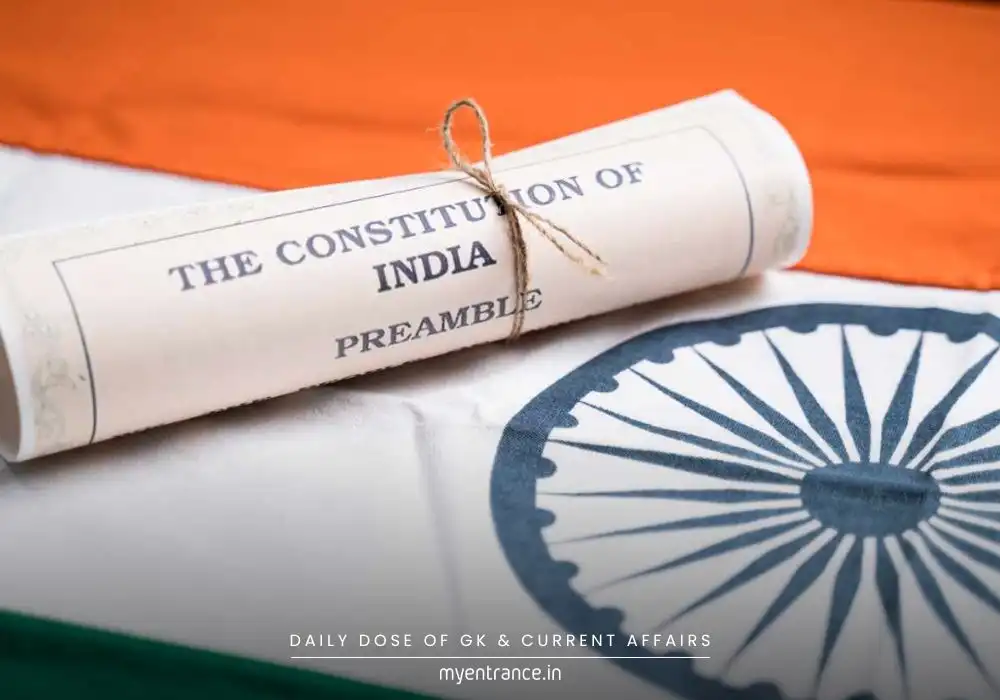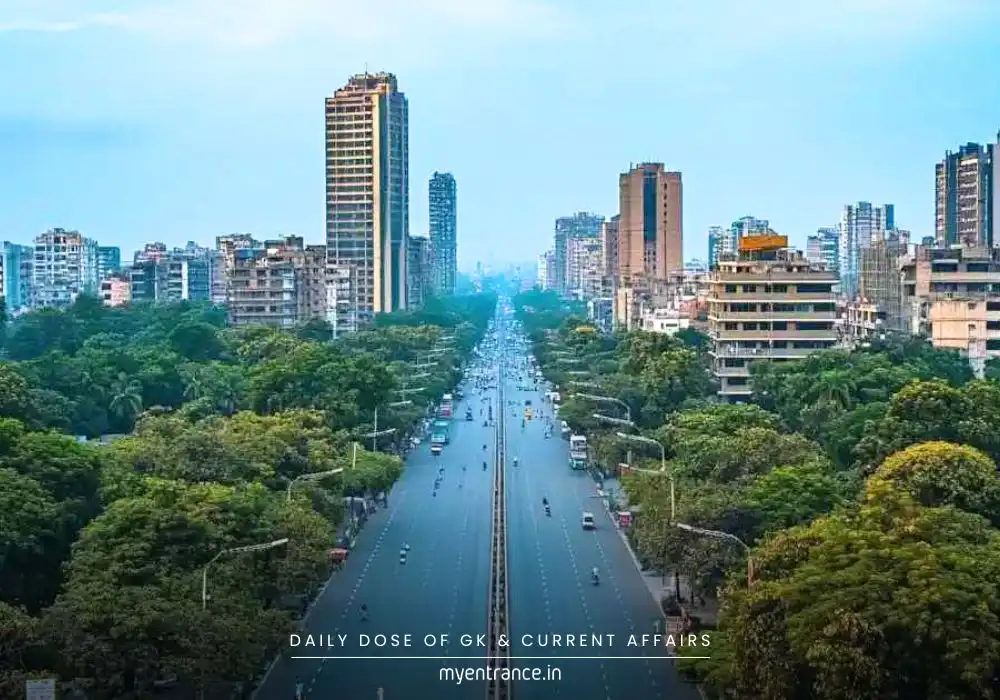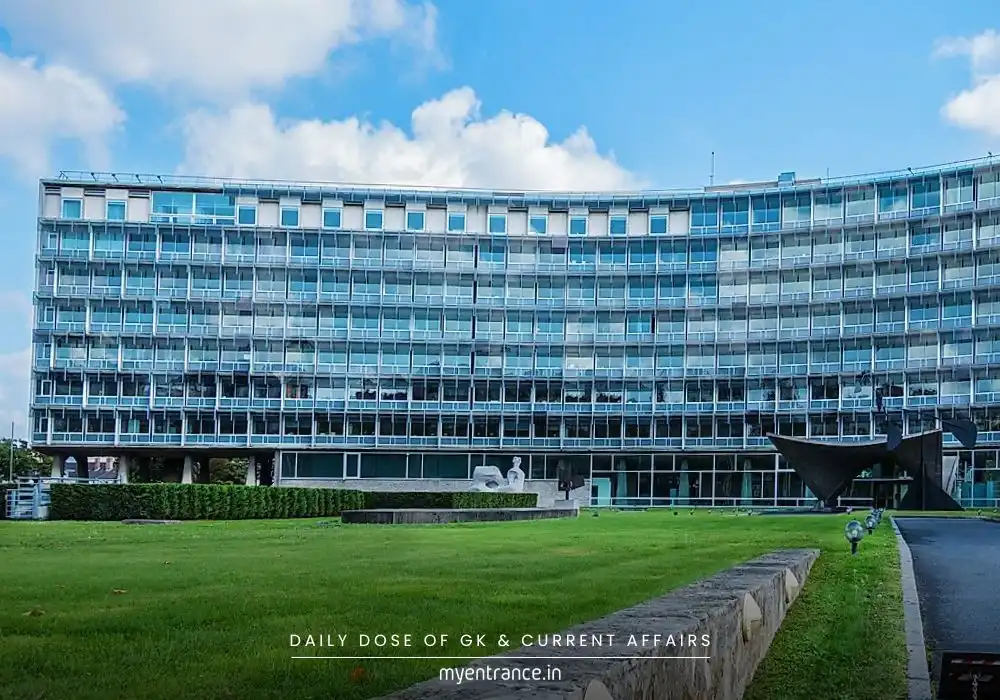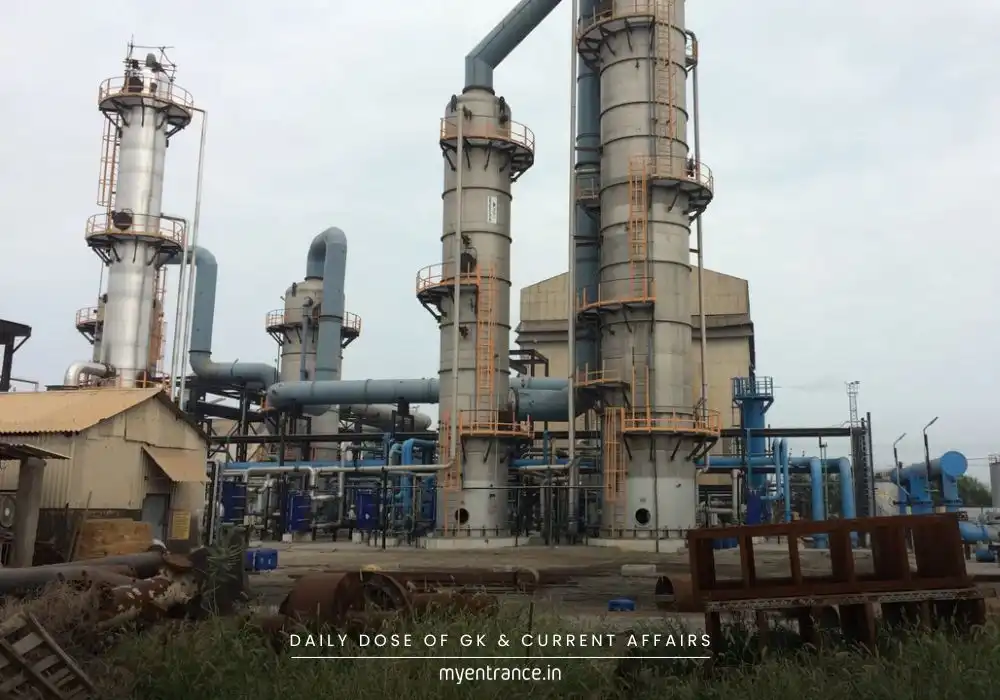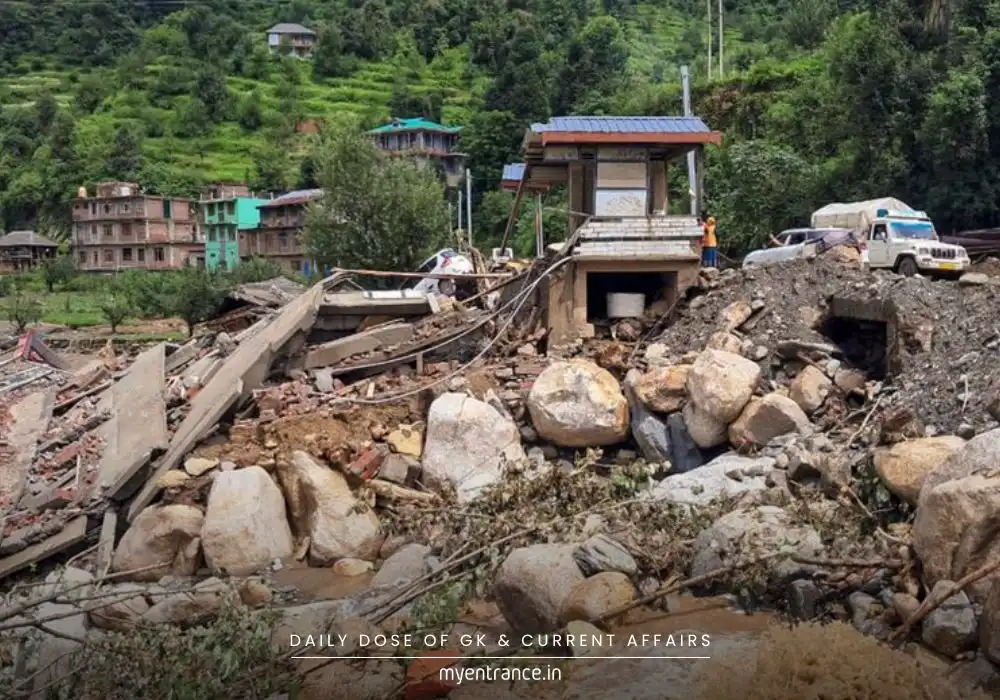Translate Language
Small Modular Reactors: India’s 100GW Nuclear Dream & Railway Net-Zero Goal
India’s RVNL is negotiating with Rosatom to build Small Modular Reactors (SMRs) for powering critical rail corridors. This aligns with India’s ₹20,000cr Nuclear Energy Mission and 100GW nuclear target by 2047.
1. SMRs: Game-Changer for Infrastructure
Compact & Scalable: 300MW reactors requiring 90% less land than conventional plants.
Targeted Deployment: For energy-intensive rail projects:
Rishikesh-Karnaprayag (Himalayan terrain)
Bhanupali-Bilaspur
Yavatmal-Nanded
Indore-Budni
Strategic Significance: Supports Indian Railways’ net-zero by 2030 goal (replaces diesel).
2. Policy Push: Nuclear Energy Mission 2025
Budget Allocation: ₹20,000cr for R&D; 5 indigenous SMRs by 2033.
Three-Stage Nuclear Program:
Stage 1: PHWRs (Pressurized Heavy Water Reactors) – Use natural uranium.
Stage 2: Fast Breeder Reactors (FBRs) – Breed plutonium from spent fuel.
Stage 3: Thorium-based reactors (AHWR/Molten Salt) – For long-term energy security.
Bharat Small Reactors (BSRs): Indigenous SMRs under development by BARC.
3. Russia-India Collaboration: Opportunities & Challenges
Rosatom’s Expertise: Global leader in SMR tech (e.g., RITM-200 reactors).
Bilateral Synergy: Builds on Kudankulam nuclear plant success.
Hurdles:
Cost (₹100 crore/MW vs solar at ₹5 crore/MW).
Nuclear liability concerns (Civil Liability for Nuclear Damage Act).
Uranium fuel dependency.
4. Global Context & India’s Edge
SMR Race: US/UK/China investing heavily; India leverages thorium reserves.
PHWR Advantage: 18 operational PHWRs (e.g., Kakrapar) – World’s largest fleet.
Net-Zero Alignment: Nuclear’s 24/7 power complements solar/wind intermittency.
5 Key Takeaways
SMR Benefits: Faster deployment (3 years vs 10), enhanced safety, and grid stability.
Railway Decarbonization: SMRs power remote rail sections, cutting 15MT CO2/year.
Thorium Future: Stage 3 program taps India’s 30% global thorium reserves.
Cost Challenge: High SMR costs need viability gap funding.
Skill Development: Creates 10,000+ jobs in nuclear engineering.
Sample Q&A for UPSC Mains
Q: How do SMRs support India’s infrastructure and climate goals?
A: Enable clean energy for remote projects (e.g., Himalayan railways), reduce fossil imports, and aid net-zero targets through 24/7 carbon-free power.
Q: Critically analyze India’s Three-Stage Nuclear Program.
A: Strengths: Energy security via thorium utilization. Weaknesses: Slow Stage-2 FBR deployment; fuel reprocessing bottlenecks.
Q: Discuss challenges in India’s SMR adoption for public infrastructure.
A: High capital costs, regulatory hurdles (Atomic Energy Act), liability issues, and public apprehension post-Fukushima.
Q: Why is the RVNL-Rosatom pact significant for bilateral ties?
A: Enhances energy-tech cooperation beyond defence, counters Western sanctions on Russia, and advances India’s “Atmanirbhar” energy goals.
Q: Compare PHWRs and SMRs in India’s energy mix.
A: PHWRs (630MW+) supply baseload power; SMRs (<300MW) offer modularity for decentralized needs like railways or industrial clusters.
Most Predicted Questions
Comprehensive study materials, Expert-guided tips & tricks, Mock tests and instant results.
Start your SSC, NIFT, NID, FDDI, PSC journey today with MyEntrance, your ultimate online coaching platform.
